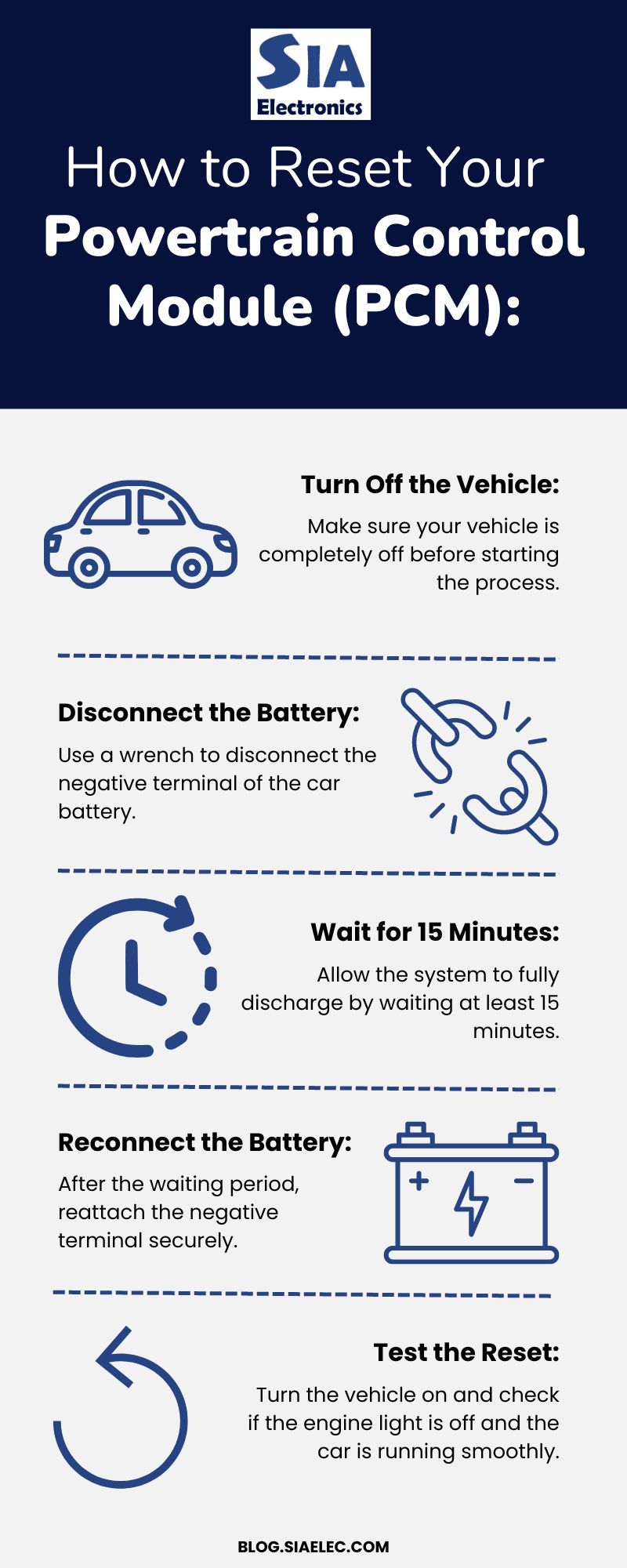How to Reset Your Powertrain Control Module: A Step-by-Step Guide
Learn how to reset your powertrain control module with our step-by-step guide. Get your car running smoothly again in no time!
Learn how to reset your powertrain control module with our step-by-step guide. Get your car running smoothly again in no time!
The Powertrain Control Module (PCM) is a crucial component in modern vehicles, managing both engine and transmission functions. Over time, it might need resetting to address performance issues or after repairs. This blog will provide a step-by-step guide on how to reset the Powertrain Control Module, including the tools required, common symptoms of malfunction, and the expected time for the process. As a leader in automotive electronic control solutions, SIA Electronics offers extensive experience in re-manufacturing and repairing various automotive components, including the PCM.
The Powertrain Control Module is an integrated computer system responsible for controlling your vehicle’s engine and transmission. It receives data from various sensors throughout the vehicle and makes real-time adjustments to optimize performance, fuel efficiency, and emissions. The PCM plays a pivotal role in ensuring that your vehicle operates smoothly and efficiently.
A malfunctioning PCM can lead to a range of performance issues. Here are common symptoms indicating that your PCM might need resetting or repair:
Resetting the PCM requires specific tools and equipment. Here’s what you’ll need:
Resetting the PCM can be done in several ways. Here’s a detailed guide to help you through the process:
Refer to your vehicle’s service manual for specific instructions on resetting the PCM, as the process can vary depending on the make and model.
The time required to reset the PCM depends on the method used:
Resetting the Powertrain Control Module is a critical maintenance task that can resolve various performance issues and ensure that your vehicle runs optimally. Whether you use an OBD-II scanner or perform a manual battery disconnect, understanding the process and symptoms of a malfunctioning PCM will help you maintain your vehicle’s performance. SIA Electronics, with over 20 years of experience, is a leader in re-manufacturing automotive electronic control modules, providing expertise and quality solutions for all your automotive needs.
If resetting the PCM does not resolve the issue, you may need to perform further diagnostics to identify underlying problems. Consider consulting a professional mechanic or contacting SIA Electronics for expert advice.
You can reset the PCM yourself using the methods described, but if you are uncomfortable with the process or if the problem persists, seeking professional help is recommended.
The PCM does not typically need frequent resetting. Reset the PCM only when you experience symptoms of malfunction or after replacing related components.
Resetting the PCM may clear temporary error codes, but it should not erase critical vehicle settings. However, you may need to drive the vehicle for a short period to allow the PCM to recalibrate.
Yes, disconnecting the battery is a common method for resetting the PCM. Ensure that you follow safety precautions and consult your vehicle’s service manual for specific instructions.
Resetting the PCM may help resolve issues affecting fuel efficiency, but it is not a guaranteed solution. For persistent fuel efficiency problems, additional diagnostics and maintenance may be required.
